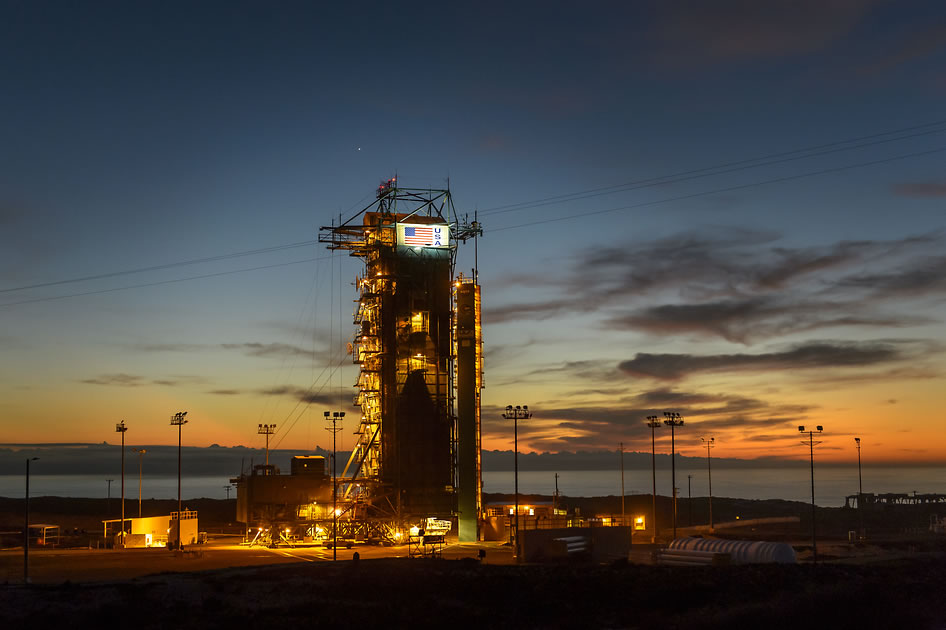NASA’s Soil Moisture Active Passive (SMAP) Ready for Jan. 29 Launch

The sun sets behind Space Launch Complex 2 (SLC-2) with the Delta II rocket and the Soil Moisture Active Passive (SMAP) observatory protected by the service structure on Tuesday, Jan. 27, 2015, at Vandenberg Air Force Base, Calif. SMAP is NASA’s first Earth-observing satellite designed to collect global observations of surface soil moisture and its freeze/thaw state. SMAP will provide high resolution global measurements of soil moisture from space. The data will be used to enhance scientists’ understanding of the processes that link Earth’s water, energy, and carbon cycles.
Video: Soil Moisture Mission Previewed
NASA’s Soil Moisture Active Passive mission (SMAP) was previewed during a Jan. 27 pre-launch briefing at Vandenberg Air Force Base. SMAP is the first U.S. Earth-observing satellite designed to collect global observations of surface soil moisture. The mission’s high resolution space-based measurements of soil moisture will give scientists a new capability to better predict natural hazards of extreme weather and improve our understanding of Earth’s water, energy and carbon cycles. Liftoff from Space Launch Complex 2 aboard a United Launch Alliance Delta II rocket is targeted for Jan. 29 at 6:20 a.m. PST (9:20 a.m. EST).
